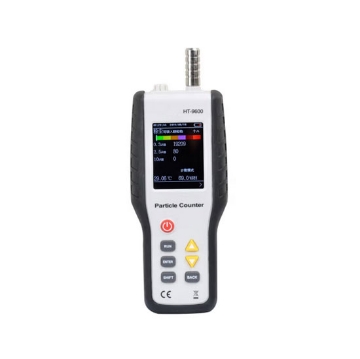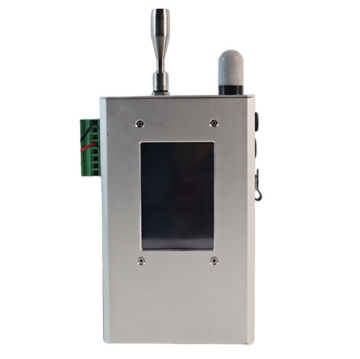How do Particle Counters Work?
Particle counters are sophisticated instruments used to measure and count particles in various environments. They operate based on different technologies, but the basic principle remains the same: detecting and quantifying particles suspended in the air or liquids. Here's a brief overview of how particle counters work:
A particle counter is an instrument that uses the principle of light scattering to count dust particles. Light scattering is influenced by factors such as particle size, light wavelength, particle refractive index, and the particle's absorption characteristics. However, concerning the intensity of scattered light and particle size, there is a fundamental rule that the intensity of scattered light increases with the increase in the particle's surface area. In this way, a certain flow of dust-laden gas passes through a beam of strong light, causing particles to emit scattered light. This scattered light is then focused by a lens onto a photomultiplier tube, converting light pulses into electrical pulses, from which particle counts are determined. Particle diameters are calculated based on the relationship between the intensity of particle scattering and particle size. Therefore, by measuring the intensity of scattered light, one can determine the size of the particles. This is the fundamental principle of light-scattering particle counters.

These instruments, particle counters are designed and manufactured based on the principle of particle scattering for measuring the size and number of dust particles in unit volume air in clean environments, with cleanliness levels ranging from Class 10 to Class 300,000. It uses the principle of light scattering by dust particles. When dust particles are exposed to light, they produce scattered light of a certain intensity, which is directly proportional to the particle size. Counting the number of light pulses corresponds to the number of particles. It utilizes a semiconductor laser as the light source for the scattering system, offering advantages such as concentrated energy and a single wavelength, resulting in higher precision and sensitivity. It is compact, lightweight, versatile, and user-friendly, with computer control. It is highly convenient for testing clean environments and is an ideal instrument for assessing and evaluating various clean environments in industries such as microelectronics, pharmaceuticals, biology, healthcare, precision machinery, optics, aerospace technology, and others.

Particle Sampling:
The process begins with particle sampling. A sample of air or liquid from the environment of interest is drawn into the particle counter using a pump or other means. The sample is then prepared for analysis.
Particle Detection:
Different types of particle counters employ various methods for particle detection. Here are a few common techniques:
- Light Scattering: Optical particle counters shine a light source (usually a laser) into the sample. When particles pass through the beam, they scatter light in different directions. Detectors measure the intensity and angles of scattered light to determine particle size and count.
- Condensation: Condensation particle counters use supersaturated vapor to enlarge particles, making them easier to detect. This method is particularly useful for detecting very small particles.
- Liquid Immersion: Liquid particle counters work by immersing particles in a liquid medium. As particles flow through the liquid, they generate electrical signals or changes in light absorption that can be quantified.
- Data Analysis: The signals generated by the detectors are processed and analyzed by the particle counter's internal electronics. This analysis includes determining the size and concentration of particles in the sample.
- Display and Output: The results are typically displayed on the particle counter's screen or can be transmitted to a computer for further analysis. Users can see the particle count, size distribution, and sometimes additional data like particle composition.
- Calibration: To ensure accuracy, particle counters require regular calibration. Calibration involves comparing the instrument's measurements with known standards to make any necessary adjustments.
- Reporting: Many particle counters offer the capability to generate reports or store data for future reference or regulatory compliance.
It's important to note that particle counters are used in various fields, including pharmaceuticals, cleanrooms, environmental monitoring, and indoor air quality assessments. Particle counters are important test and measurement instruments. The choice of particle counter technology and its specific operating parameters may vary depending on the application's requirements. Understanding how particle counters work is essential for obtaining accurate and reliable results in these diverse industries.

